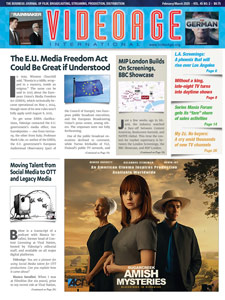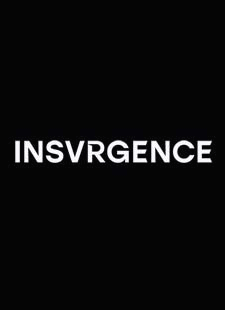In April, the U.S. non-broadcast TV sector (cable and streaming services) introduced 132 new scripted series for the 2016-17 season, 86 of which were dramas. In May, the broadcast industry followed suit with an additional 59 new scripted TV series. Of these, 43 were dramas and 16 were comedies. The unusual part was that 15 of these new series were picked up well before the broadcast Upfronts. And that large number is without counting returning series.
The flood of new series could be the result of two factors: The increased time viewers spend in front of their TV devices and the resurgent TV advertising market.
Predictions from media buyers suggest that TV ad-spending commitments could increase anywhere from three to five percent in this year’s upfront market. The increased ad spending is attributed to the fact that last year many advertisers who reduced their commitments at the Upfronts ended up paying up to 20 percent more for commercial time in the scatter market.
Plus, according to the Wall Street Journal, some advertisers, like Procter & Gamble, are coming back to TV because the returns on their digital media investments didn’t live up to expectations. The concerns are about digital advertising issues including fake Web traffic generated by computerized “bots” and the lack of consensus on how to judge when an ad is “viewable.” Indeed, during last May’s Upfronts, digital advertising was called “subprime video,” in reference to “junk mortgages.” As FOX Network group president Toby Byrne pointed out during the Upfronts: using TV’s audience metric, 14 million viewers on YouTube would equate to 1,620 people. On the other hand, by using digital metrics, 14 million viewers of FOX’s World Series (baseball) broadcast, would translate to 6.8 billion viewers.
Last year, overall primetime upfront volume for broadcast networks decreased 3.7 percent to $8.36 billion, while cable TV’s upfront declined 7.1 percent to $8.95 billion. Predictions of TV ad revenue for 2016 call for a growth of 0.5 percent to $63 billion, excluding special events such as the Olympics and election spending.
As to the number of international program buyers who went to Hollywood for the L.A. Screenings while the Upfronts were taking place in New York City (e.g., Canadians and Latins), and after the Upfronts (the rest of the buyers), each studio had a different figure, ranging from 1,500 to 2,500. The higher number included buyers from domestic (U.S.) cable, IFE, ships and even prisons, however, there was a reduced number of buyers from small territories such as Iceland, Denmark and Greece.
Flooding of the market with an unprecedented number of new series definitely meant more choices and better opportunities for the buyers, even though many of the new series, especially those produced for streaming services, will not go into distribution for a long time. That’s because, in an effort to keep up with cable and digital networks’ year-round series launch season, broadcasters are following suit.
During the presentations, all studio executives were playing the “number-one” card — each vying for the largest number of new series, returning series, ratings, demographics, number of foreign markets, number of seasons and follow-ups on digital media.
As for describing the new season in overall terms, the expressions often used were “spin-offs” and “remakes” both from movies (Lethal Weapon, Taken) and retro TV series (MacGyver, Prison Break) with a good dose of superheroes and supernaturals, all with a mix of British imported talents (some of whom are able to switch to perfect American accents). And all three sexes are well represented, of course. Reboots and remakes of vintage shows are the equivalent of the movie business’ reliance on franchises. The difference between the two is that “remakes” often involve movies (but not franchises), while “reboots” are associated with just the idea and the title of an old TV show. Name-brand shows also help with international sales. Chicago seems to be the new season’s favorite city with four shows, both new and returning (e.g., Chicago Justice, Chicago Fire, Chicago Med, and Chicago PD) and many others just shot on location or on-screen set up in that city (even if, at times, the actual shooting is done elsewhere, like for the now canceled The Good Wife and its new spinoff project.). Another phenomenon in evidence is the tendency for viewers to watch theatrical movies on small TV devices and TV series on large screens at home. Big film stars — like Keifer Sutherland and Katherine Heigl — are leading new dramas this year, too.
This year, the indie portion of the L.A. Screenings (which started at the same time as the Upfronts: May 16) moved to the InterContinental Hotel, since the nearby Century Plaza Hotel in the Century City side of Los Angeles is closed for renovations for the next three years. Out of the 80 distribution companies actively involved with the Screenings, 77 exhibited at the InterContinental, including the studios’ LATAM divisions (with the exclusion of Sony Pictures). For the first time this year, there were “meeting tables” for those companies who couldn’t afford a suite or simply did not find one since the hotel was sold out for the event.
The indie portion was nearly over the day after the studios (starting with Fox) began screening on their lots on Thursday, May 19, ending on Friday, May 27 (the full studio screenings calendar can be viewed at: www.videoageinternational.net/l-a-screenings-2016/).
With five general receptions, this year the indies outshined the studios, since only Disney holding its traditional International Upfront screenings and reception, while other studios preferred private dinners with selected groups of buyers.
As to the new venue, the InterContinental Hotel could be considered a “returning” site, since the event used to be split between there and the Century Plaza from 2004 until 2009. All the exhibitors VideoAge contacted reported satisfaction both with the more compact nature of the hotel and the business done. What contributed to make the indie portion a success was the fact that more than 260 buyers were also staying at the hotel.
Since the InterContinental is located in a remote area and the nearby shopping center was undergoing extensive renovations, most of the indie market participants remained confined on the premises, with the only complaints being about a limited and recurrent restaurant menu.
And, as for the past 11 years, there was the traditional L.A. Screenings Veteran luncheon held at the InterContinental Hotel. This year, Michael J. Solomon was celebrated as the International TV Distribution Hall of Fame honoree
The luncheon was actually started in 2005 as an informal event among the late Jim Marrinan, then a TV consultant; Gary Marenzi (who had just left Paramount) and VideoAge’s Dom Serafini. The following year it included Tony Friscia, who had just left Warner Bros. In subsequent years, Friscia coordinated the participation (and started keeping tabs), which at one point reached over 25 veteran TV executives.












Leave A Comment